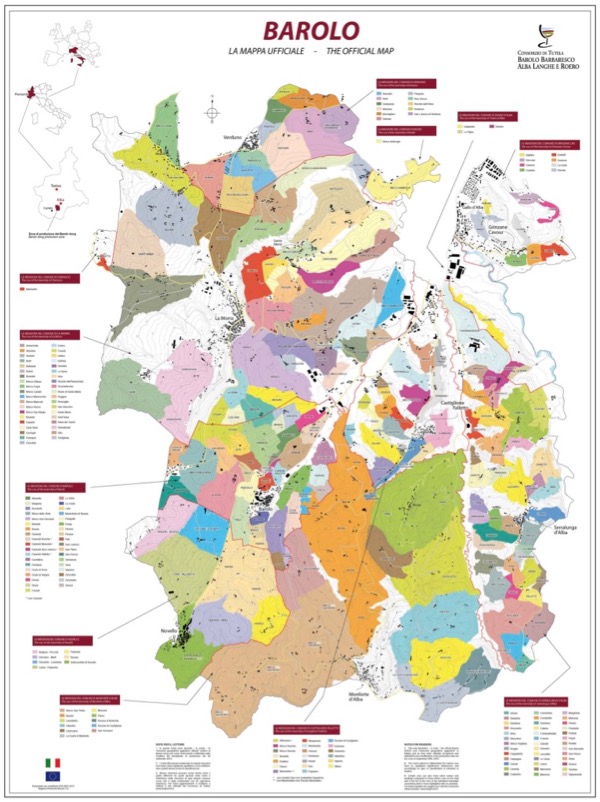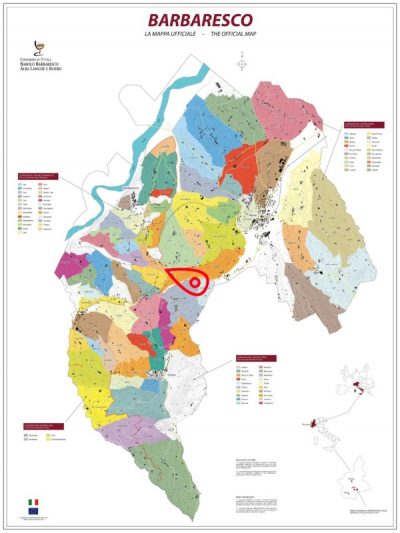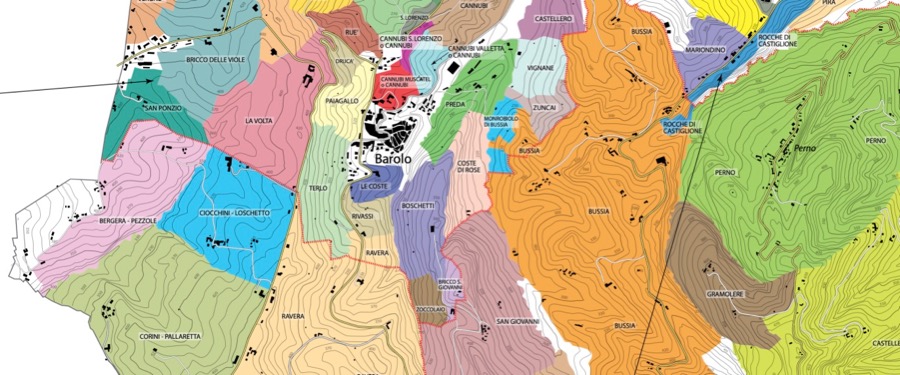Today we have an exceptional offering of smaller producers from Barolo and Barbaresco. The hidden gems! With holdings in some of Barolo and Barbaresco’s best sites and makers that have proven they have mad skills you’re in for some fun. These wines are regularly poured next to the likes of Gaja, Bartolo Mascarello, Giacomo Conterno, Cappellano and beyond!
This also happens to be a classic example of knowing your vineyards! These wines are sourced from the dress circle, Montestefano Barbaresco lovers are familiar with, Roncagliette not so much, menti0n that within the Cru sit the Gaja’s Costa Russi and Sori Tildin and there’s a few more nods! Add to that Canonica’s Paiagallo vineyard in Commune of Barolo sitting at the south end of Cannubi and it’s a pretty handy collection of vineyards! Oh and Giovanni Canonica’s neighbour is … Bartolo Mascarello!
**The wines are in the country and will ship in the second half of June payment in full will be required to secure your allocation**
About Giovanni Canonica
Giovanni Canonica is a hidden legend in the town of Barolo. He and his family run a small agriturismo where, in the cellars below, he makes his wines. He has only 1.5 hectares of vines in the Paiagallo vineyard directly on the hill above Barolo. The only other proprietors in this vineyard site are Marchesi de Gresy and Fontanafredda, neither of whom does a mono-vineyard bottling from it. Gianni proves, in the right hands, that doing so merits consideration. His holdings are also separated from the conventional vineyard work of the other producers in a way that keeps as much integrity to Canonica’s vines as possible. The vineyard is planted in Nebbiolo in the best spots and Barbera in the less interesting plots. Everything is traditional in the vineyard and cellar: no herbicides, pesticides or fertilizers, only sulfur and copper treatments, de-stemming, maceration for 30-40 days using only indigenous yeasts, vertical hand press, then into cement and slavonian oak for ageing. A small number of bottles are made, mostly sold at the cellar.
The 2015 Barolo Vintage
2015 began with high levels of snow providing good water reserves. Combined with mild spring temperatures and various rain falls, bud break and flowering were early, followed by an excellent fruit set. From the second half of June throughout July, there was no rain and temperatures stabilized to above-average maximums. Fortunately the vineyards were not stressed thanks to the plentiful water reserves. In terms of quantity, production was average allowing for careful, targeted green harvesting with special care taken to ensure foliage was managed to provide good protection for the clusters. There was no disease pressure so preventative measures were not required. The white varieties were harvested between the end of August and mid-September and the excellent sugars were matched by wonderful acidity. The Dolcetto harvest began around the second week in September and the wines were aromatic, softer and deeply coloured. Barbera is the variety which perhaps most benefited from the 2015 season with the usually high acidity tempered by excellent ripe tannins, dense colours and richly flavoured fruit and body. Nebbiolo ripened perfectly, though slightly earlier than the last few years. The excellent quality of the tannins balanced by perfect acidity will certainly ensure elegant, long-lasting wines with good structure.
Tasting the 2015 to date we’ve found wines with lovely ripe tannins, a fresh fruit core and a great deal of sophistication. Delicious drinking to be had.
Where in the World is Giovanni Canonica?
The Paiagallo vineyard is in the Commune of Barolo, just to the north-west of the township of Barolo and the bottom end of the Cannubi vineyard. Ginzane Carvour is the north-east corner of the Barolo region.

About Olek Bondonio
Olek Bondonio is certainly not your typical Italian winemaker. He loves surfing, snowboarding and has a penchant bordering on the obsessive for Vegemite. After studying oenology he embarked on a few years of travel where he traversed the globe doing as many vintages as he could. This exposure to different soil types, various traditions and diverse approaches in both the cellar and vineyard resulted in his fascination with a sense of place and a drive to best express that through his wines. His production epitomizes the saying that great wine is made in the vineyard, where he works tirelessly to grow healthy fruit without synthetic additions or chemical input. He continues to cultivate grapes that have long been planted in that zone such as Barbera, Pelaverga, Dolcetto and Nebbiolo.
Even if Olek is making wines under his own label since 2004, his farm, La Berchialla, has been in the family for over 200 years and is a remarkable property sitting atop the hill of Cru Roncagliette (which incidentally is the same vineyard of Gaja Sori Tildin).
About Serafino Rivella
A tiny cult producer of Barbaresco at the Montestefano Cru
Everything at the winery is done by Teobaldo and his wife Maria – they are both entirely hands on and make just two wines – the Barbaresco Montestefano and their Dolcetto d’Alba
“Imagine if Maria-Theresa Mascarello [of Bartolo Mascarello] made Barbaresco, it would taste like that!”. David Berry Green who heads up the Italian Wine purchases for the esteemed Berry Brothers & Rudd, who also is the long time ‘significant other’ of Maria-Theresa.
The producer in reference was Teobaldo Rivella of Cantina Serafina Rivella.
Rivella’s tiny cellar produces about 1000 cases of wine each year, all heralding from the historic Cru of Montestefano in Barbaresco itself. Of the 1000 cases, about 750 are Barbaresco “Montestefano” and 250 are of a serious and regal Dolcetto. The vineyard was planted in 1963 by Rivella’s father, and the first vintage produced at the estate was 1967. His Montestefano parcel is next to his house, so he treats it, “come il mio giardino” (as my own little garden) he says, meticulously tended. Since the beginning, the vineyards have also been farmed organically.
The Montestefano Cru is unique in that is comprised of a solid meter of active limestone at the surface with clay and tufo underneath. This provides for a wine that has both freshness and lift, but also a bit more serious structure than most Barbarescos. Rivella vinifies more like Barolo, with 3-4 week macerations and long ageing of 30-40 months in Botti Grande. As such, he tends to release his wines a year later than his neighbours, more like his brethren further south in Barolo. The Dolcetto too is aged in large cask, and released 18 months after the vintage. Not just a tutti-fruity wine to simply drink and forget.
In getting to know Rivella and his wines over the past several years, one gets a glimpse at the Piedmont of yesteryear. The wines and the people are unabashedly ‘old-school’ in the best sense. There is a sense of strength, pride and character in how they operate.
The 2015 & 2016 Barbaresco Vintages
Early signs from the Langhe wines and Barbaresco coming through show 2016 to be a vintage of elegance and sophistication with a solid core of fruit and ripe tannins. A classic in the making.
From Antonio Galloni
A First Look at the 2016s…
I came away from my late summer tastings of Barbarescos deeply impressed. The region, which has so often appeared sleepy and backward, especially compared to Barolo, seems to be going through a brilliant phase. Reference-point estates are upping their game, while a number of ambitious, young winemakers are making significant improvements in quality. The 2016s, wines from a potentially historic vintage, may very well put Barbaresco on the map big time. As I traveled from producer to producer, I experienced that sense of excitement and energy I always feel when in the presence of important vintages and wines.
The young 2016 Barbarescos are some of the most compelling young wines I have tasted in twenty years of visiting the region. Many of the 2016s are still in barrel, but the picture that is starting to emerge from wines I tasted in bottle and cask is of a very high quality vintage with the potential to be truly extraordinary.
In tasting, the 2016s are extraordinarily harmonious. The extended growing season yielded wines with healthy Nebbiolo fruit, soaring aromatics and perfectly ripe, super-polished tannins. A number of producers told me they had both healthy maturities and low pHs in 2016, a combination that is unusual. Stylistically, the 2016s remind me of the 2004s, but with more fruit and the added finesse that comes with another dozen years of experience in farming and winemaking. The best 2016s I tasted are positively dazzling. Most of the 2016s have only recently been bottled, and yet their quality is evident.
The 2015 Barbarescos in Bottle…There’s a Lot to Talk About
Two thousand fifteen was marked by mostly warm and dry conditions that were a welcome respite after the considerable stress of 2014. The growing season started with significant rain and snow in the winter of 2014/2015 that would prove to be critical later on. Warm weather at the beginning of the year caused the vines to awaken early. The critical periods of budbreak, flowering and fruit set all benefited from benign conditions. Sustained heat followed from late June and all through July, which accelerated the final phase of ripening and ultimately led to an early harvest. Water reserves accumulated throughout the winter became essential during the very dry summer months.
The first thing that is obvious about the 2015s is that most of the wines are pretty elegant. In other words, there is huge difference between how growers deal with a warm vintage today and how they responded to similar conditions in the 1990s and 2000s, when the preference was to make huge, potent wines. Broadly speaking, the 2015s are generous Barbarescos with soft curves and a good bit of fruit intensity, but they aren’t overdone. The finest 2015s are rich, ample and quite giving, with perhaps just a touch less site-specific detail than in cooler years. But there are also some disappointments. The hot weather appears to have blocked ripening in several spots. I tasted a number of wines that are unusually forward in both their color and overall freshness. These wines often show modest structure and a candied fruit profile. As a whole, the 2015s are marked by tannins that are slightly coarse, especially in comparison with 2016, a year in which the long growing season allowed for far more consistent ripening. The best 2015s have enough fruit to provide a measure of balance, but in less successful wines the quality of the tannins is much more evident.
Where in the World are Olek Bondonio & Serafino Rivella?
Look for the township of Barbaresco and just to the east you’ll find the famed Cru of Montestefano. Head south along west border of the region and you’ll find Roncaglietti named Sori Tildin by Gaja. In the center north in the commune of Nieve you’ll find Straderi.

About the Wines
2015 Barolo
2015 Giovanni Canonica Barolo Paiagallo
2015 Serafino Rivella Montestefano
Rivella's 2015 Barbaresco Montestefano is a very pretty, nuanced wine. Gently mellowed by several years in cask, the 2015 is super-expressive today despite its recent bottling. Dried cherry, cedar, tobacco, and mint are nicely layered in this inviting, mid-weight Barbaresco. Silky tannins add to the wine's considerable appeal. This is such a beautiful wine.

You must be logged in to post a comment.